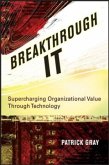Does business mobility really work?
The book you are holding is evidence that it does. The virtual team that created Work Goes Mobile had members located in seven different time zones. We adapted our work hours to make the most of interaction across time zones, and although not originally intended, the time zone differences often allowed our work on the book to follow the sun.
We grappled with many of the challenges discussed in this book: developing effective communication and interaction in virtual situations, creating methods to make information available at the moment of need, and striving to be productive regardless of location. Mobile technologies kept us in contact and able to work where and when we needed to. Some members learned to send SMS messages for the first time in their lives; others reviewed drafts of chapters in Microsoft Word and PDF format on their mobile devices. Nokia's conferencing system provided the infrastructure to cost-effectively keep us in touch. We worked from corporate offices, home offices, Internet cafes, cars, airports, and hotels. When we did meet face-to-face (twice over the course of the project), most members relied heavily on mobile capabilities to continue working since they were away from their primary workplace. And just as mobile work does not mean independent work, we found that those face-to-face meetings provided exceptional value at critical moments in the book's development.
Creating this book was just one of many activities that Nokia and its employees are pursuing as we travel the path toward mobility as a way of doing business. Even as we share our experience here, hoping to help others avoid the obstacles we have faced, we continue to forge ahead toward new ways of working that transcend traditional working times and places.
Work Goes Mobile
Nokia's Lessons from the Leading Edge
Michael Lattanzi, Antti Korhonen
and Vishy Gopalakrishnan
Ask ten people what 'mobility' means, and most will mention 'freedom of movement'. In organizational terms, mobility is the freedom to collaborate and do business outside of traditional work places and times. The explosion in use of smartphones, PDAs, and other advanced mobile devices proves that today, more than ever, workers want to stay connected while on the go.
Yet the advent of new, far-reaching mobile capabilities raises a fundamental question: Can you mobilize a business and benefit from it? Nokia believes that you can.
This book tells the inside story of Nokia's efforts to use mobile capabilities for business benefits. It helps decision makers understand that mobility is a business solution - and that only by addressing people, processes, and technology in a balanced way can they realize significant business benefits.
Focusing on the unique aspects of this transition and using Nokia's own experience, this guide prepares organizations for the next transformation in how they do business. It offers a wealth of valuable insights for any organization into how mobility and mobile work can provide a strong source of competitive advantage.
Table of contents:
Foreword.
Acknowledgements.
Introduction.
I. Understanding Mobility.
1. The Nokia Journey.
An Unhappy CIO.
Starting Down the Path.
Why Mobilize Your Business?
2. What Is a Mobilized Business?
Perspectives on Mobility.
Evolving Toward a Mobilized Business.
The Executive's View of a Mobilized Business.
3. The Skeptics Speak: Challenges to Mobility.
Understanding the Voice of the Skeptic.
A Coordinated Response.
4. Identifying the Benefits of Mobility.
Finding a Precedent.
General Business Benefits.
Pitching the Benefits of Mobility.
Summary.
II. Preparing for a Mobile Business.
5. Getting to Know Your Workforce.
Understanding Levels of Mobility.
Which Workers Are the Most Mobile?
Understanding Mobile Worker Expectations.
6. Mobilizing Business Processes.
Identifying Business Processes for Mobilization.
Profiling Real-World Examples.
Summary.
7. Choosing Mobile Technology Enablers.
Mobile Devices.
Mobile Device Management.
Connectivity.
Tools and Applications.
Security.
8. Optimizing the Mobile Workplace.
What Is Place?
Working in Public and Low Influence Places.
Working at Home.
Working at Nokia Locations.
The Skeptics Speak.
9. Managing a Mobile Workforce.
How Mobility Affects Workforce Management.
Social Aspects of Mobility.
III Work Goes Mobile.
10. Building Business Cases for Mobility.
Unique Characteristics of Mobility Solutions.
A Method for Developing Mobility Business Cases.
Comparing Mobility Solutions.
11. Getting Started.
Stages of Mobility Evolution.
Infrastructure and Technology Enablers.
Horizontal Applications.
Vertical Applications.
New Ways of Doing Business.
First Steps.
Afterword.
Mobility in Practice: Nokia's Workforce Speaks.
Glossary.
Index.
For More Information.
About the Authors.
The book you are holding is evidence that it does. The virtual team that created Work Goes Mobile had members located in seven different time zones. We adapted our work hours to make the most of interaction across time zones, and although not originally intended, the time zone differences often allowed our work on the book to follow the sun.
We grappled with many of the challenges discussed in this book: developing effective communication and interaction in virtual situations, creating methods to make information available at the moment of need, and striving to be productive regardless of location. Mobile technologies kept us in contact and able to work where and when we needed to. Some members learned to send SMS messages for the first time in their lives; others reviewed drafts of chapters in Microsoft Word and PDF format on their mobile devices. Nokia's conferencing system provided the infrastructure to cost-effectively keep us in touch. We worked from corporate offices, home offices, Internet cafes, cars, airports, and hotels. When we did meet face-to-face (twice over the course of the project), most members relied heavily on mobile capabilities to continue working since they were away from their primary workplace. And just as mobile work does not mean independent work, we found that those face-to-face meetings provided exceptional value at critical moments in the book's development.
Creating this book was just one of many activities that Nokia and its employees are pursuing as we travel the path toward mobility as a way of doing business. Even as we share our experience here, hoping to help others avoid the obstacles we have faced, we continue to forge ahead toward new ways of working that transcend traditional working times and places.
Work Goes Mobile
Nokia's Lessons from the Leading Edge
Michael Lattanzi, Antti Korhonen
and Vishy Gopalakrishnan
Ask ten people what 'mobility' means, and most will mention 'freedom of movement'. In organizational terms, mobility is the freedom to collaborate and do business outside of traditional work places and times. The explosion in use of smartphones, PDAs, and other advanced mobile devices proves that today, more than ever, workers want to stay connected while on the go.
Yet the advent of new, far-reaching mobile capabilities raises a fundamental question: Can you mobilize a business and benefit from it? Nokia believes that you can.
This book tells the inside story of Nokia's efforts to use mobile capabilities for business benefits. It helps decision makers understand that mobility is a business solution - and that only by addressing people, processes, and technology in a balanced way can they realize significant business benefits.
Focusing on the unique aspects of this transition and using Nokia's own experience, this guide prepares organizations for the next transformation in how they do business. It offers a wealth of valuable insights for any organization into how mobility and mobile work can provide a strong source of competitive advantage.
Table of contents:
Foreword.
Acknowledgements.
Introduction.
I. Understanding Mobility.
1. The Nokia Journey.
An Unhappy CIO.
Starting Down the Path.
Why Mobilize Your Business?
2. What Is a Mobilized Business?
Perspectives on Mobility.
Evolving Toward a Mobilized Business.
The Executive's View of a Mobilized Business.
3. The Skeptics Speak: Challenges to Mobility.
Understanding the Voice of the Skeptic.
A Coordinated Response.
4. Identifying the Benefits of Mobility.
Finding a Precedent.
General Business Benefits.
Pitching the Benefits of Mobility.
Summary.
II. Preparing for a Mobile Business.
5. Getting to Know Your Workforce.
Understanding Levels of Mobility.
Which Workers Are the Most Mobile?
Understanding Mobile Worker Expectations.
6. Mobilizing Business Processes.
Identifying Business Processes for Mobilization.
Profiling Real-World Examples.
Summary.
7. Choosing Mobile Technology Enablers.
Mobile Devices.
Mobile Device Management.
Connectivity.
Tools and Applications.
Security.
8. Optimizing the Mobile Workplace.
What Is Place?
Working in Public and Low Influence Places.
Working at Home.
Working at Nokia Locations.
The Skeptics Speak.
9. Managing a Mobile Workforce.
How Mobility Affects Workforce Management.
Social Aspects of Mobility.
III Work Goes Mobile.
10. Building Business Cases for Mobility.
Unique Characteristics of Mobility Solutions.
A Method for Developing Mobility Business Cases.
Comparing Mobility Solutions.
11. Getting Started.
Stages of Mobility Evolution.
Infrastructure and Technology Enablers.
Horizontal Applications.
Vertical Applications.
New Ways of Doing Business.
First Steps.
Afterword.
Mobility in Practice: Nokia's Workforce Speaks.
Glossary.
Index.
For More Information.
About the Authors.




